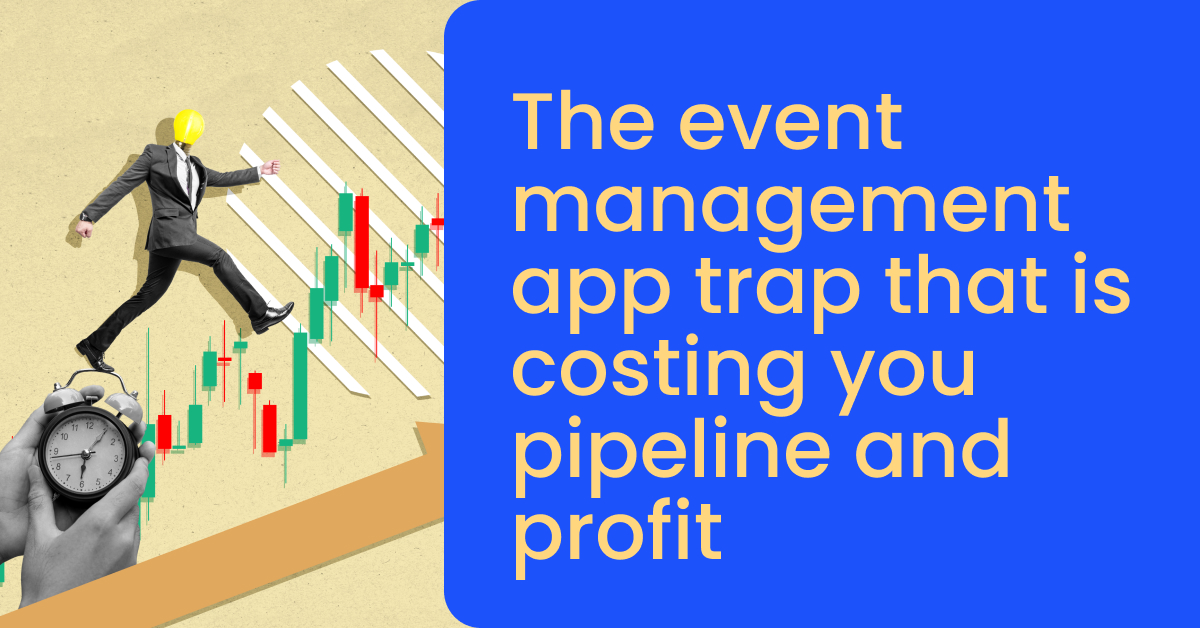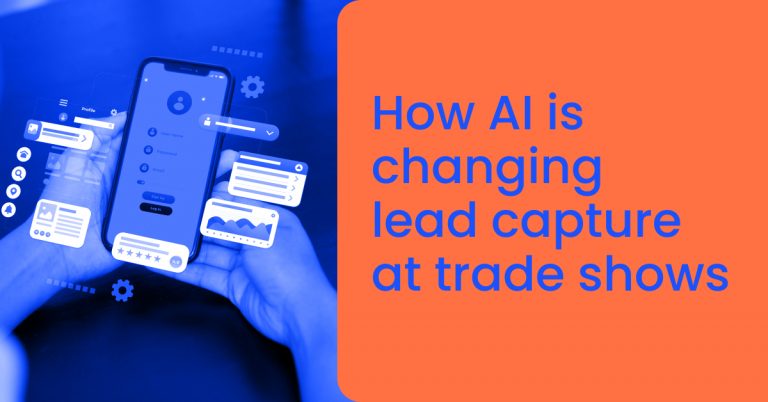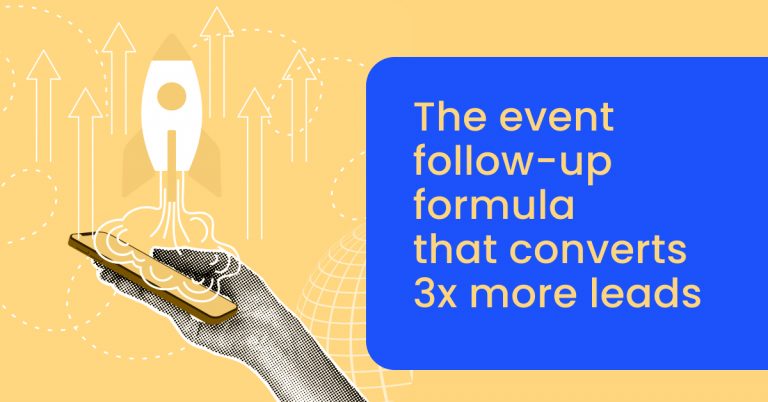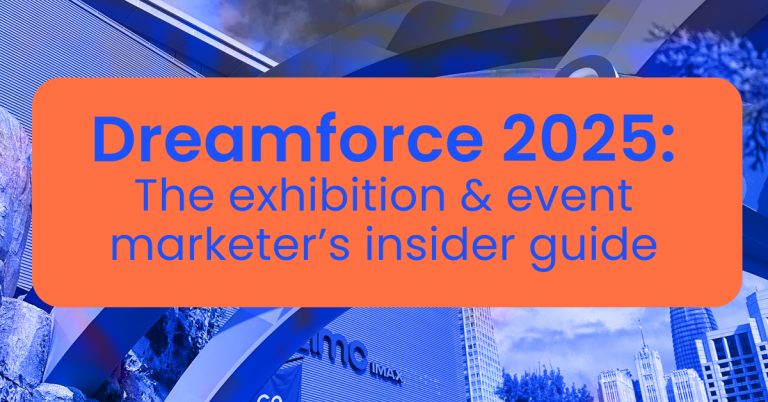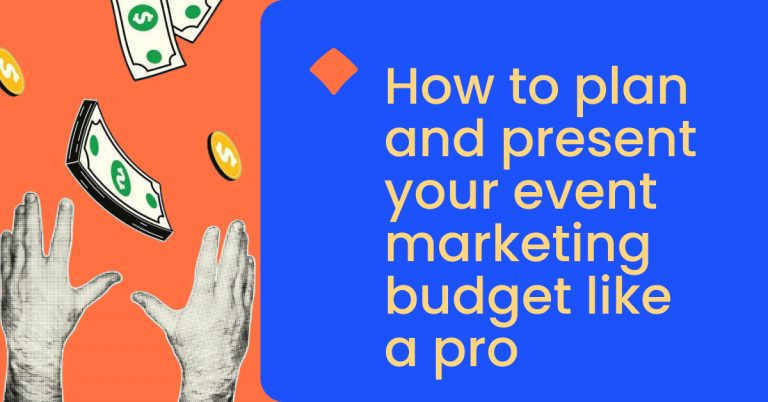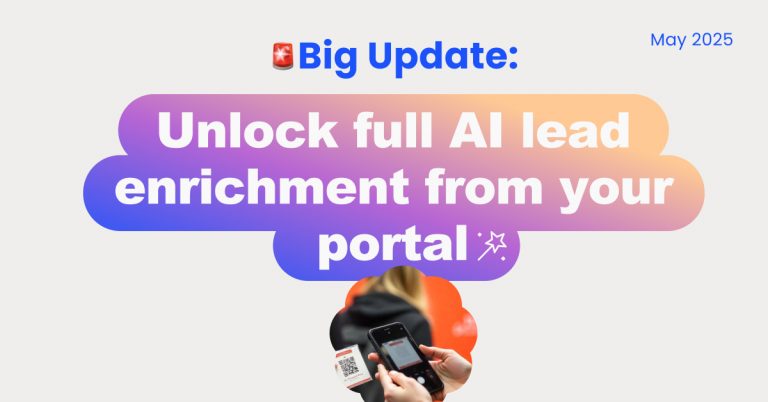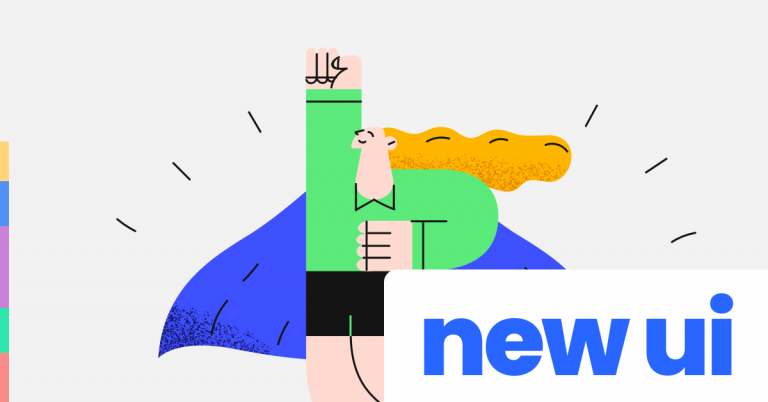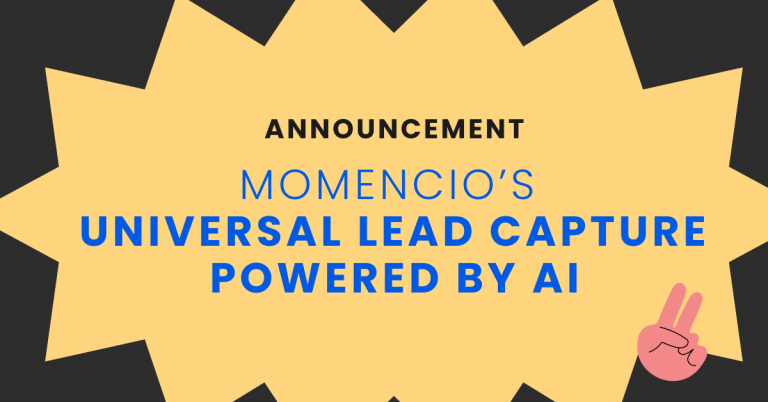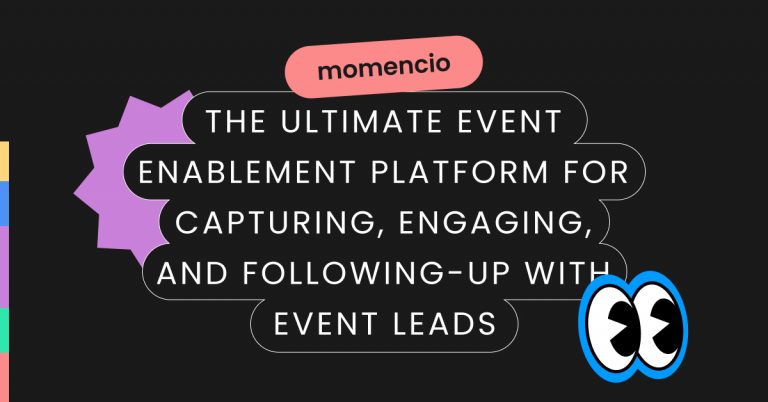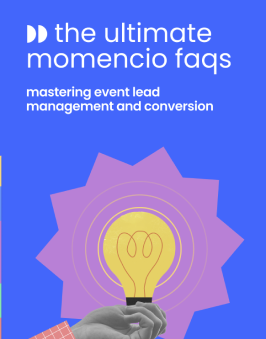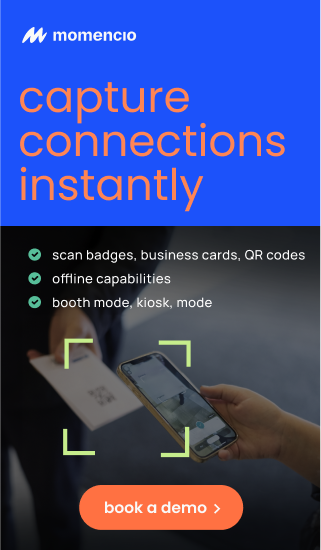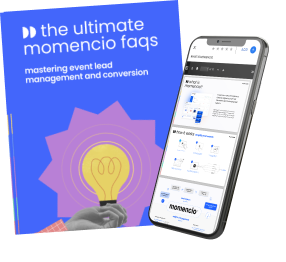The promise of software is to make things easier.
But too often, what we end up with is more dashboards. More buttons. More things to remember, and more to forget.
If you’re planning events—whether it’s a hundred-person summit or a ten-thousand-person trade show—you’ve probably been told you need an event management app. Something to help you track schedules, attendees, booth layouts, badge scans, and check-ins. And you might already be using one. Or five.
But here’s a simple truth: more apps don’t create better events. They create more noise.
What creates better events—remarkable events—are the connections that happen inside them. The conversations that spark trust. The moments that get remembered. And none of that lives inside an app. It lives in what you do with the data, the follow-up, the intention.
Too many planners are chasing logistics when they should be chasing outcomes.
You don’t need another piece of software that makes you feel productive. You need a system that makes your event worth attending, worth following up on, worth selling from.
This isn’t about tech. It’s about decisions. It’s about the difference between managing an event and growing a business.
If you’re tired of juggling tools and still not seeing results, this article is for you. Because what you actually need isn’t an app. It’s a shift.
The illusion of control
There’s a comfort in dashboards.
All those graphs, timelines, checkboxes—they whisper reassurance. They say, “Look, everything is under control.” But what they rarely say is, “Here’s how we move the needle.”
The problem with most event management apps isn’t that they don’t work. It’s that they work exactly as intended: they help you manage.
But managing isn’t the goal.
Managing is keeping up. Managing is surviving. Managing is what you do when the status quo is good enough.
What you’re here to do is lead. Create change. Build something worth talking about. And that doesn’t come from the number of sessions scheduled or badges printed. It comes from making people feel seen, understood, and remembered.
The illusion is this: that if you get the tech stack just right, the event will run itself and the sales will follow. But every planner, every marketer who’s done this long enough knows the truth. You can have flawless execution and still walk away with cold leads and forgotten booths.
Because what moves someone isn’t a seamless registration flow. It’s relevance. It’s timing. It’s follow-up that actually speaks to who they are, what they need, and why now matters.
Control is seductive. But control isn’t value. And apps that sell you control aren’t selling you results. They’re selling you comfort.
And comfort doesn’t convert.
What you actually need instead
If you’ve worked more than one event this year, you’ve already felt the gap.
It’s the moment when your booth is buzzing, conversations are happening, hands are shaking—and yet, a week later, your sales team still says: “We don’t know who to follow up with.”
The problem isn’t that the event didn’t go well. It’s that the story ended too early.
So what do you actually need?
You need to stop thinking about event planning as a checklist and start thinking about it as a continuum. Events don’t end at the booth. The real work—the valuable work—starts after the event floor has been torn down.
Let’s make it clear:
You need a lead memory system, not a lead list.
Not a spreadsheet. Not a badge scanner file dump. What you need is a way to remember who each person was, why they mattered, what they said, and what they care about. Because without that, your follow-up is just noise.
Start here:
- Capture context, not just contact info.
- Train your team to log a specific need or interest in real-time.
- Take 15 seconds to tag the quality of the interaction. Hot? Warm? Just swag?
- Attach a keyword or topic to each lead—what pain point they talked about.
Then, you need automated relevance, not just automation.
Everyone sends a follow-up email. That’s not enough. You need to send a message that speaks directly to the problem they told you about.
For example:
- If someone asked about integration, your follow-up shouldn’t be a thank you—it should be a link to a case study or explainer on how integration saved your client six weeks of work.
- If they mentioned budget constraints, your follow-up should show how other lean teams drove results.
You can’t do this manually at scale. You need a system that connects each lead to the right resource—automatically.
Finally, you need alignment between marketing and sales.
You can spend $100K on a show, collect 2,000 leads, and still miss the pipeline impact if sales treats the leads as cold. Why? Because most CRMs weren’t built for event context.
You need a feedback loop:
- What happened to the leads 30, 60, 90 days post-event?
- Which content got the most clicks?
- Who booked a demo, who ghosted, and why?
This is where insight lives. Not in managing sessions or printing name tags. But in understanding which moments led to momentum.
That’s what you actually need.
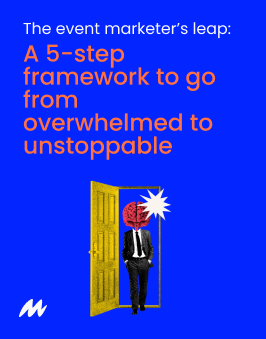
The cost of convenience
Convenience doesn’t scale strategy
There’s an ironic truth in the world of event marketing: the more we chase efficiency through technology, the more disconnected we become from effectiveness. Event management apps often promise speed—automated workflows, drag-and-drop agendas, check-in integrations. They deliver ease, but rarely impact.
For many event marketers and field teams, convenience can become a trap. When you rely on technology to reduce friction, you often end up reducing depth. Conversations get logged as scans. Follow-ups become batch emails. The nuance of a face-to-face moment—the very essence of event ROI—gets flattened into a timestamp.
68% of marketers say aligning teams around unified customer data is a challenge. And that’s the core issue: when the event ends, the system that was so convenient during execution often fails to carry over the emotional, strategic, and contextual data that matters for pipeline acceleration.
You may leave the trade show with thousands of leads, but if your tech stack only stored names and companies, not needs and intentions, you’re sending your sales team into follow-up with a flashlight and a blindfold.
Convenience, in this case, becomes expensive—because it prioritizes collection over connection.
Automation without personalization erodes trust
Automation is not the enemy. Poorly deployed automation is.
One of the most common post-event mistakes is sending mass follow-ups with generic thank-you messages or demo invites. They sound like every other email in the inbox because, functionally, they are.
Yet the expectation of today’s buyers has shifted. According to McKinsey, 71% of B2B customers expect companies to deliver personalized interactions, and 76% get frustrated when that doesn’t happen. This means a one-size-fits-all approach to follow-up is no longer just ineffective—it actively damages trust.
When convenience leads to messages that ignore context, it signals to your prospects that you weren’t really listening. That you valued the badge scan, not the conversation. That what you’re sending wasn’t designed for them, but for your email platform.
A better approach is to capture and act on micro-interactions. What content did they engage with? What questions did they ask? What problem were they trying to solve?
If your system doesn’t empower you to build context-driven campaigns post-event, it’s not saving you time—it’s burning your leads.
Poor insights delay revenue
Post-event, your greatest advantage is timing. There’s a short window when interest is high, memory is fresh, and the door is still open for conversation.
But most event management systems don’t surface insight quickly enough to act on it. They focus on operational metrics—check-ins, attendance, booth visits—without tying those actions to the buyer’s journey.
A study by Forrester found that only 8% of event marketers strongly agree that they can quantify event ROI. The rest? They’re working with lagging indicators, trying to reverse-engineer results without knowing which actions led to which outcomes.
That’s not just a data gap. It’s a revenue delay.
When you can’t see what worked, you can’t double down on it. When you can’t track lead behavior across touchpoints, you can’t prioritize follow-up. When your CRM fields are empty because the event tech didn’t carry over key context, your sales team starts cold—even after a warm conversation.
Convenience without insight leads to waste. And in today’s budget-conscious marketing environment, waste is no longer tolerated—it’s scrutinized.
What’s needed is not another task management platform. What’s needed is a system that brings visibility from the booth to the boardroom.
One that captures why a conversation matters, not just when it happened.
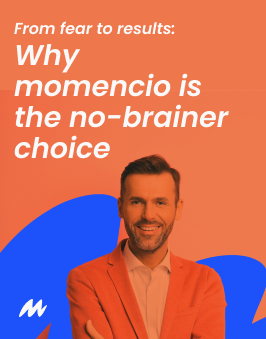
Build a system, not a stack
What’s broken: too many tools, not enough outcomes
Every time a problem pops up at an event, there’s a tool that claims to solve it. You need better check-ins? There’s an app for that. Want badge scans and lead notes? Add a CRM plugin. Need analytics? Try another dashboard.
So teams stack tools. Layer after layer. What they end up with is an event tech pile—each app solving one thing, none solving the whole thing. The average enterprise uses over 120 martech tools. That’s not a tech stack; that’s a coordination nightmare.
Each tool adds overhead—setup time, training, integration errors, and handoff delays. And more importantly, each tool introduces friction in the one place you can’t afford it: the buyer’s journey.
The sales rep doesn’t see what happened at the booth. The marketer doesn’t know who opened what. The insights die in the gaps between platforms.
Why it matters: attention is a window, not a funnel
The most valuable thing you get from an event isn’t data. It’s attention.
You’re not just capturing leads—you’re capturing a moment when a buyer is open. Open to new ideas, open to solutions, open to moving.
That openness doesn’t last.
If your system isn’t ready to meet them where they are—quickly, personally, and insightfully—that moment closes. You don’t lose a contact. You lose the chance to matter.
When teams are trapped managing tools, they miss the window to act on insight. According to Harvard Business Review, sales teams that follow up within an hour are seven times more likely to qualify leads than those who wait even just a day. Most event stacks can’t move that fast—not because people aren’t working, but because the system isn’t designed to think.
What to build instead: a system that remembers, responds, and refines
Forget the tech pile. Build a system that behaves like a good host at a dinner party: it remembers names, responds to interests, and adapts in real time.
That system should:
- Capture conversations, not just contacts
- Trigger smart follow-ups that reflect what was said, not just that they stopped by
- Sync instantly with your CRM and sales tools—so the handoff is a handshake, not a black hole
- Surface real-time engagement signals—who clicked, who ignored, who shared
- Give your team feedback they can act on before the next event, not after
This isn’t about having “one more tool.” It’s about building a system that does the thinking with you.
A system that isn’t just efficient. But intentional.
Because tools don’t close deals. Conversations do. And only systems built around human signals can turn those into something that lasts.
What a real solution looks like
The right system doesn’t just check boxes. It changes behavior.
It doesn’t get applause during a tech demo. It gets results in the sales pipeline.
And if you’re going to invest in something—time, money, buy-in from your team—it should serve your outcomes, not your process.
Here’s what a real event solution should look like.
It connects the dots in real time
Events aren’t linear. Someone stops by your booth, talks to a rep, asks for a brochure, and two days later, visits your site. That’s not a straight line—it’s a signal trail.
Your system needs to see that trail. Not just capture pieces of it but connect them. If your follow-up is still based on badge scans and generic “nice to meet you” emails, you’re chasing after shadows.
A real system shows you behavior in context: who they are, what they care about, what happened at the booth, and what they did after the event. It pulls these into a single timeline so you can act like a partner—not a spammer.
It’s not magic. It’s data done right.
It speaks sales, not software
You don’t go to events to fill out reports. You go to start relationships that drive revenue.
So, your system should speak that language. It should:
- Show which leads are warm, and why
- Prioritize by intent, not just interaction
- Help sales teams personalize without guesswork
- Deliver insights that drive action, not just dashboards that summarize activity
Buyers are 2.8x more likely to engage with a brand that offers personalized content based on previous interactions. This doesn’t happen with static forms. It happens when your system treats each lead as a person, not a record.
It evolves with each event
Every event is an experiment. The real value isn’t just in what happened—but in what you learned.
If your system ends with exporting a CSV and archiving reports, you’re doing post-mortems, not growth.
A real solution should:
- Tell you which follow-ups worked best
- Surface content that drove the most engagement
- Show which reps had the most productive conversations
- Reveal drop-off points in your post-event flow
This isn’t just analysis. It’s improvement. The kind that compounds over time.
And this is where most teams fall short. They manage events like one-offs. But the best teams build muscle from every show.
Because momentum isn’t built by doing more events. It’s built by doing them better, every time.
Conclusion
You don’t need another app. You need a better lens.
Because tools don’t solve problems. People do. Strategy does. Follow-through does.
And that’s the shift.
Most event teams are drowning in tech and starving for traction. They’re managing well, but converting poorly. They’re automating tasks, but not accelerating outcomes.
The solution isn’t more features. It’s more focus.
You’re not in the business of hosting events. You’re in the business of changing minds, building trust, and opening doors. And every event is a chance to do just that—if your system helps you carry the momentum forward.
So ask yourself:
- Are we capturing what matters?
- Are we acting while attention is still fresh?
- Are we learning fast enough to do better next time?
If the answer is no, it’s not time to add another tool. It’s time to build a system. One that thinks in moments, moves with context, and earns every conversation that comes next.
Because when your events stop being a line item and start being a growth engine, that’s when they start to matter.
If what you’ve just read feels uncomfortably familiar, that’s not a flaw in your strategy. It’s a signal.
You’re not alone in wanting better outcomes from your events. But the answer isn’t another app. It’s a system built around relevance, speed, and conversion. A system that sees the full picture—not just the check-in.
That’s why momencio exists.
Not as a tool, but as a partner to rethink how events translate into pipeline. It doesn’t just capture leads. It remembers who they are. It follows up before attention fades. It shows you what moved people—and what didn’t—so you can do it smarter next time.
If your events are worth doing, they’re worth doing right.
Book a demo with momencio and see how the right system turns handshakes into next steps, and interest into impact.
No gimmicks. Just better outcomes, built from better decisions.
FAQs
- What’s wrong with using multiple event management apps if they each solve a specific problem?
- Each app may solve a part of the problem, but the gaps between them are where opportunity is lost. Data gets fragmented. Follow-ups are delayed. Context is stripped out. When your sales team can’t see the story behind the scan, they’re flying blind. A unified system doesn’t just consolidate tools—it preserves momentum.
- I already use a CRM. Isn’t that enough to manage event leads?
- Most CRMs are built for sales stages, not event engagement. They log accounts and deals, but not booth conversations, interest signals, or post-event behavior. Without an event-specific layer, you’re forcing your team to guess who matters—and when to follow up. CRM is essential. But it’s not the whole answer.
- How soon should we follow up with leads after an event?
- The faster, the better. Research from Harvard Business Review shows that responding within an hour makes leads 7x more likely to qualify. But fast alone isn’t enough. The message must be relevant. That’s why a system that connects lead behavior with personalized content is key—it allows for both speed and substance.
- What does a “system that remembers” actually look like?
- It’s a platform that does more than collect names. It captures context: what booth visitors asked, which content they viewed, what objections they raised. It tags those interactions and feeds them into follow-ups. It connects insights across events. In short—it remembers the person, not just the presence.
- How do I justify replacing our existing tools with something like momencio?
- Ask this: are your current tools producing better outcomes—or just more activity? momencio isn’t a replacement for logistics. It’s an upgrade to outcomes. It streamlines lead capture, follow-up, and analysis so your events generate pipeline, not just busywork. If events are a major investment, the system driving them should be built for ROI—not just organization.
